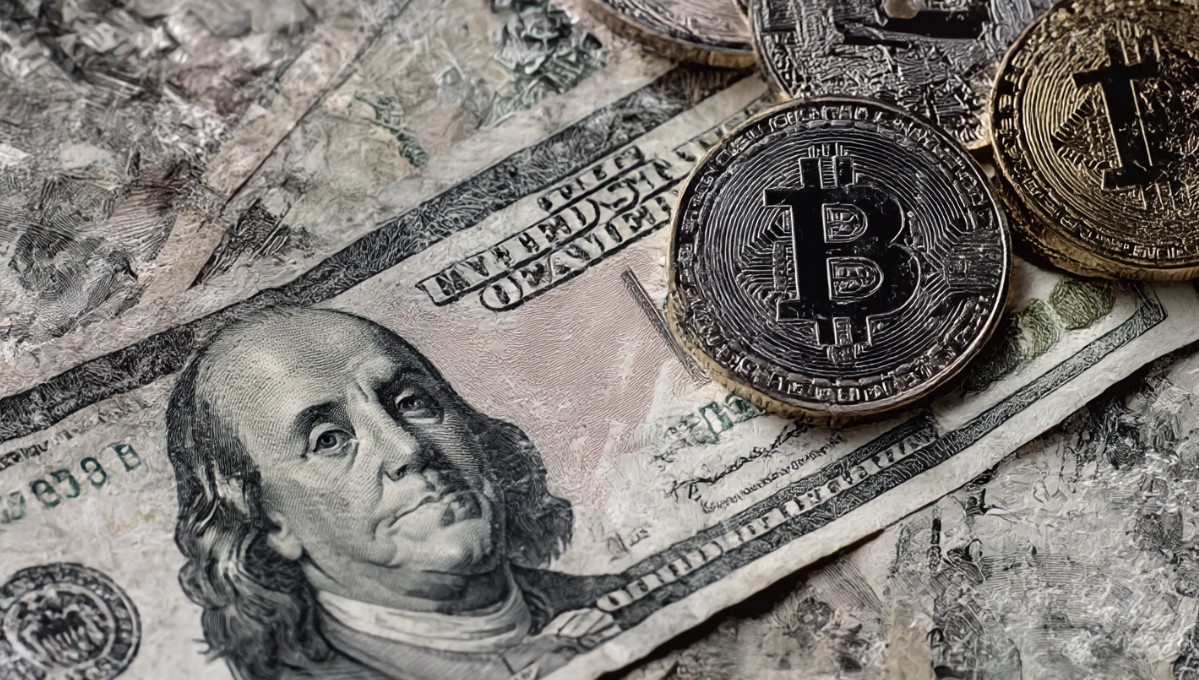
From time to time, when debts become too heavy, governments change the rules of the game. In the 1930s and 1970s, the United States did exactly that. Today, the controversy centers on stablecoins and the future of the dollar.
Vladimir Putin’s adviser, Anton Kobyakov, claimed that Washington is preparing a “scheme” involving stablecoins, cryptocurrencies, and gold to deal with a public debt that already exceeds $35 trillion. According to him, the strategy would be to devalue part of that liability and virtually start over.
The accusation carries a strong political charge, but it raises a relevant point: the U.S. and other countries — including Brazil and Russia — have already used monetary devaluation as a tool to lighten public debts. History shows how this works and why the idea of a “reset” via stablecoins runs up against practical limits.
The American Precedent: Gold and Bretton Woods
Until the early 20th century, the U.S. followed the gold standard, under which each dollar issued could be exchanged for a fixed amount of gold. This inspired international confidence but limited money creation.
In 1933, at the height of the Great Depression, Franklin D. Roosevelt signed Executive Order 6102, prohibiting citizens from owning gold and requiring them to turn it in to the government at a fixed price, under penalty of fines and imprisonment. Soon after, the government raised the official gold price (from $20.67 to $35 per troy ounce), devaluing the dollar and reducing the burden of domestic debts. In practice, those who held gold lost purchasing power, and the government gained breathing room.
In 1944, at the Bretton Woods conference, the dollar was placed at the center of the international system: pegged to gold at $35 per ounce, while other currencies were tied to the dollar. This arrangement cemented the U.S. as a global power but required discipline in issuing money.
In the 1960s, spending on the Vietnam War and social programs led to dollar issuance beyond the available gold. Countries began demanding conversion, and U.S. reserves fell rapidly. In 1971, Richard Nixon ended the dollar’s convertibility into gold. Overnight, foreign creditors holding dollars could no longer exchange them for gold. To many, it was a disguised default.
When Countries Devalue to Ease Debts
The U.S. was not alone in using this tactic:
Put simply: the government owes ten large loaves of bread, but by devaluing its currency, it delivers ten smaller loaves. The promised number is met, but the real value received is lower. The State’s debt gets lighter — society pays the bill.
The “White Default”
This mechanism is widely known as a “white default.” There is no formal default: payments are made, but in money that buys less. On paper the debt is paid, yet in real terms creditors lose out.
Two instruments underpin the process:
It’s the discreet way governments relieve debt burdens without calling it default.
Stablecoins and Today’s Hypothesis
Stablecoins are digital tokens pegged to the dollar. Today, they move roughly $274 billion, according to market data. For countries with fragile currencies or capital controls, they work like digital dollars accessible outside the traditional banking system.
The Russian claim suggests the U.S. could use this instrument to expand liquidity and reduce the real weight of its debt — a kind of “digital Bretton Woods,” reinforcing dollar centrality.
But here’s the inconvenient detail: scale.
Even in that optimistic scenario, the comparison shows that stablecoins may be relevant at the margin for rolling over debts, but not for “resetting” them. It’s like trying to pay a multi-million-dollar mortgage with an allowance: it helps a bit, but it doesn’t solve the problem.
Monetary Base ≠ Stablecoins
Another technical point: stablecoins do not create new dollars. They function like tokenized deposits.
When someone buys a stablecoin, they swap a bank deposit for a token, and the issuer invests that cash in Treasuries or liquid assets. There is no increase in the monetary base (MB = physical currency in circulation + bank reserves at the Fed). In other words, stablecoins change the form of circulation, but they do not expand the Federal Reserve’s balance sheet.
Under the GENIUS Act (2025), payment stablecoins must be backed 1:1 by eligible reserve assets, with redemption rights and federal oversight. They remain liabilities of private issuers — not dollars issued by the Fed.
Possible Effects Across Digital Assets
If the U.S. were to use stablecoins strategically, the effects would differ by asset type:
Stablecoins: could scale as global digital dollars, but under greater regulatory, audit, and even blocking risks in specific cases.
CBDCs: a U.S. digital dollar would accelerate projects elsewhere. Brazil, for instance, is developing Drex, which brings efficiency but also raises debates over privacy and control.
Decentralized cryptocurrencies: would likely strengthen as an independent alternative, though with greater volatility and heightened regulatory attention.
Conclusion
The Russian statement mixes rhetoric with a historical warning. Yes, governments have used devaluation to ease debts — including the U.S., in 1933 and 1971. But today, the notion of a massive “default via stablecoins” doesn’t hold up: the scale isn’t there, and incentives cut the other way.
The most likely risk remains the “white default”: everything gets paid, but in money that buys less. For crypto users, the takeaway is clear:
In the end, the dilemma is old: when debt becomes too heavy, the temptation to change the rules of the game is always there.
Comentários